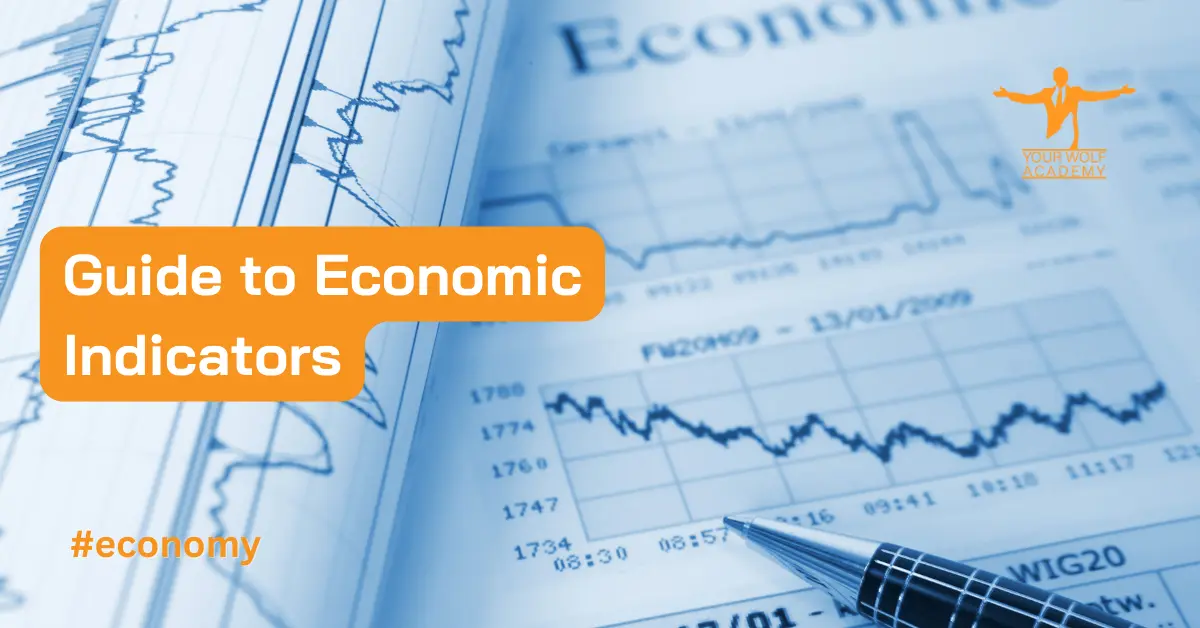Economic indicators are statistics that provide insights into the performance of a country’s economy. These indicators are used by governments, businesses, and investors to make informed decisions about economic policies, investments, and financial strategies.
In this comprehensive guide, we will explore what economic indicators are, how they are measured, and their impact on the economy.
Gross Domestic Product (GDP)
Gross Domestic Product (GDP) is the most commonly used economic indicator. It measures the value of all goods and services produced within a country in a specific time period, typically a quarter or a year. GDP is used to determine the overall health of the economy and its growth rate.
A high GDP indicates a strong economy, while a low GDP indicates a weak economy. However, GDP doesn’t always provide a complete picture of economic health. For example, it doesn’t take into account the distribution of wealth, environmental factors, or non-monetary contributions to society.

Inflation
Inflation is the rate at which the general level of prices for goods and services is rising, and, subsequently, the purchasing power of currency is falling. Inflation can be caused by a variety of factors, including an increase in demand, a decrease in supply, or changes in government policies.
While some inflation is necessary for economic growth, too much inflation can have negative consequences, such as reducing the value of savings and increasing the cost of borrowing.

Consumer Price Index (CPI)
The Consumer Price Index (CPI) is a measure of the average change over time in the prices paid by urban consumers for a market basket of consumer goods and services. The CPI is used to calculate inflation and is often used to adjust wages, taxes, and government benefits for inflation.
The CPI includes a wide range of goods and services, including food, housing, transportation, and medical care.

Unemployment Rate
The unemployment rate measures the percentage of the labor force that is unemployed but actively seeking employment. A high unemployment rate indicates a weak economy, while a low unemployment rate indicates a strong economy.
However, the unemployment rate doesn’t provide a complete picture of the job market, as it doesn’t take into account the number of people who have given up looking for work or who are underemployed.

Interest Rates
Interest rates are the cost of borrowing money and the return on lending money. The Federal Reserve sets interest rates in the United States, and changes to interest rates can have a significant impact on the economy.
When interest rates are low, borrowing becomes cheaper, leading to increased spending and investment. When interest rates are high, borrowing becomes more expensive, leading to decreased spending and investment.

Balance of Trade
The balance of trade measures the difference between a country’s exports and imports. A positive balance of trade, also known as a trade surplus, occurs when a country exports more than it imports. A negative balance of trade, also known as a trade deficit, occurs when a country imports more than it exports.
A trade surplus can indicate a strong economy, as it means that a country is producing goods and services that are in demand around the world. A trade deficit can indicate a weak economy, as it means that a country is importing more goods and services than it is exporting.

Stock Market Indexes
Stock market indexes, such as the Dow Jones Industrial Average, the S&P 500, and the Nasdaq Composite, are measures of the performance of a group of stocks. These indexes are used to track the overall health of the stock market and can provide insights into the state of the economy.
When stock markets are performing well, it can indicate that investors have confidence in the economy and are willing to invest their money in companies. When stock markets are performing poorly, it can indicate that investors are uncertain about the economy and may be hesitant to invest.

Housing Starts
Housing starts are the number of new residential construction projects that have begun during a specific time period. This economic indicator can provide insights into the strength of the housing market, which is an important sector of the economy.
When housing starts are high, it can indicate that the housing market is strong and that there is demand for new homes. When housing starts are low, it can indicate that the housing market is weak and that there is a lack of demand for new homes.

Retail Sales
Retail sales are the total amount of goods and services sold by retailers to consumers. This economic indicator can provide insights into consumer spending, which is an important component of the economy.
When retail sales are high, it can indicate that consumers are confident in the economy and are willing to spend money. When retail sales are low, it can indicate that consumers are uncertain about the economy and may be hesitant to spend money.

Conclusion
Economic indicators are essential tools for understanding the performance of a country’s economy. By measuring key factors such as GDP, inflation, unemployment, interest rates, and trade balances, economists can gain insights into the overall health of the economy and its growth potential.
Understanding economic indicators can also be beneficial for businesses and investors, as it can help them make informed decisions about financial strategies and investments. By staying informed about economic indicators and their impact on the economy, individuals and businesses can be better prepared to navigate the complex and ever-changing economic landscape.
Your Wolf Academy offers a range of educational resources to help traders succeed, including free signals, technical analysis, and weekly webinars. Sign up today and get a recommendation for a regulated brokerage company that suits your needs.


